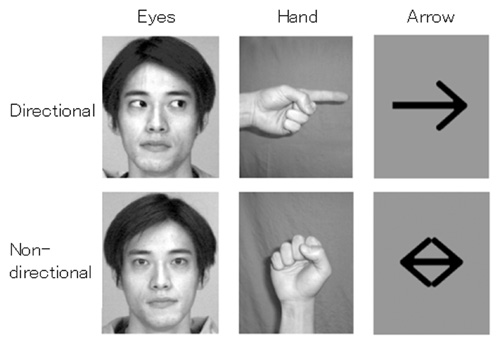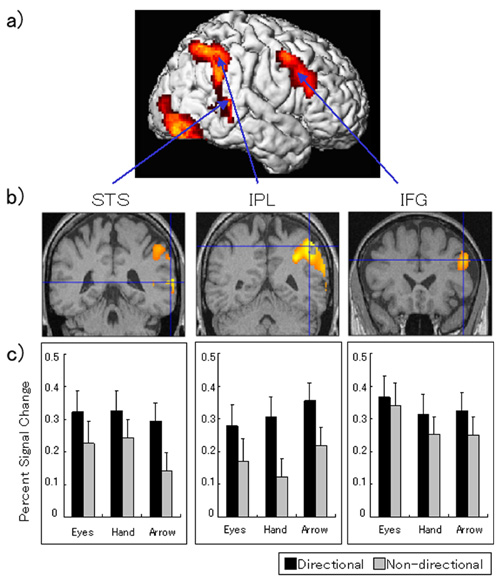SATO Wataru Laboratory
Commonalities in the neural mechanisms underlying automatic attentional shifts by gaze, gestures, and symbols
(Sato, W., Kochiyama, T., Uono, S. & Yoshikawa, S.: Neuroimage)
Eye gaze, hand-pointing gestures, and arrows automatically trigger attentional shifts.
Although it has been suggested that common neural mechanisms underlie these three types of attentional shifts, this issue remains unsettled.
We measured brain activity using fMRI while participants observed directional and non-directional stimuli, including eyes, hands, and arrows, to investigate this issue.

Conjunction analyses revealed that the posterior superior temporal sulcus (STS), the inferior parietal lobule, the inferior frontal gyrus, and the occipital cortices in the right hemisphere were more active in common in response to directional versus non-directional stimuli.

These results suggest commonalities in the neurocognitive mechanisms underlying the automatic attentional shifts triggered by gaze, gestures, and symbols.
Return to
Recent Research.
Return to
Main Menu.

